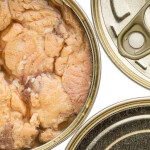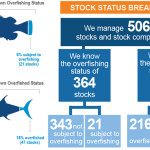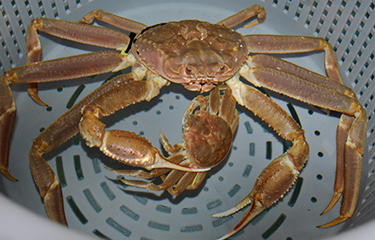NOAA scientists believe a 2018-2019 marine heatwave helped lead to a decline in snow crabs in Alaska, according to a study published in the periodical Science this month.
The snow crab population in the Eastern Bering Sea dropped by 50 percent from 2018 to 2019, and in 2021 a NOAA survey found the lowest number of snow crabs in the region since the survey began in 1975. Regulators responded by closing the fishery for the 2022–2023 season. The fishery remains closed, and the federal government has declared disasters for the 2021-2022 and 2022-2023 Bering Sea snow crab seasons.
In the agency’s latest research, NOAA scientists ruled out bycatch and predation as major contributors to the decline. Instead, the study suggests that the main cause was the 2018-2019 marine heatwave which led to starvation.
“During the marine heatwave, snow crabs faced a triple threat,” Alaska Fisheries Science Center Stock Assessment Scientist Cody Szuwalski, who was the lead author on the research, said. “Their metabolism increased, so they needed more food; their habitat was reduced so there was less area to forage, and crabs caught in our survey weighed less than usual. These conditions likely set them up for the dramatic decline we saw in 2021.”
Researchers were able to show in lab tests that snow crab metabolism nearly doubled when the water temperature increased at the same level as the marine heatwave.
“The unprecedented caloric demands coupled with a small area from which to forage relative to historical grounds provide more evidence to support the model conclusions that starvation likely played a key role in the snow crab decline,” Alaska Fisheries Science Center’s Kodiak Lab Director Mike Litzow said. “This event mirrors what happened to Pacific cod in the Gulf of Alaska in 2016 during a marine heatwave.”
The study’s authors suggest that regulators allow fishermen to diversify, conduct regular biological surveys, and prepare disaster response plans that can be implemented in a timely manner.
“Support for the development of alternative marine-based livelihoods (such as mariculture) may also alleviate some of the pressures associated with fishery collapses,” the authors note in the study. “The Bering Sea is on the frontlines of climate-driven ecosystem change, and the problems currently faced in the Bering Sea foreshadow the problems that will need to be confronted globally.”
Photo courtesy of NOAA Fisheries







